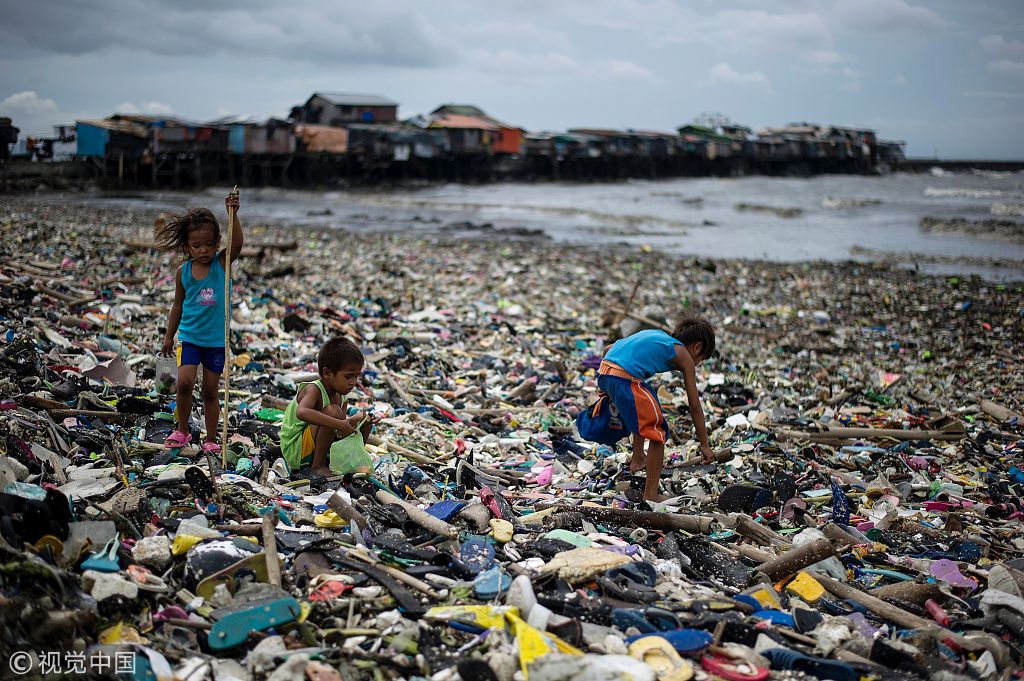Steps needed to tackle ripple effects of natural disasters


Climate change is giving rise to more frequent and intense natural disasters, while rapid social and economic progress in the Asia-Pacific is making the region more vulnerable than ever.
Recovery can be swift, but the indirect ripple effects could last for years, if not decades, around the region and elsewhere.
Without preventive action, the human and economic costs of natural disasters will soar. The toll is already enormous. Developing Asia accounted for almost 55 percent of the 60,000 disaster fatalities worldwide between 2000 and 2018, while damage to physical assets cost the region at least $644 billion.
Though economies typically bounce back within a year, the impact of even less severe disasters can last much longer. Urban flooding, landslides and storms often go unrecorded, but by regularly wiping out homes and livelihoods, they trap affected families in poverty and worsen inequality compared with families in less-exposed areas.
Typhoons have been linked to an elevated mortality risk among baby girls that lasts up to two years after the disaster; children who lose parents to disasters spend less time in school as they assume parenting duties; and lower nutrition during lean drought years can lead to low birth weight or stunting of growth.
The effects can also have an impact far beyond the disaster epicenter through temporary migration or resettlement. Rural populations fleeing to cities after floods or droughts can cause social disorder or conflict. Displaced populations can find themselves exposed to other hazards, such as epidemics, which they could have avoided at home.
Disruptions to global value chains mean the impact of natural disasters also reverberate beyond the affected area, as suppliers are unable to deliver crucial intermediate goods elsewhere in the country or abroad.
In 2011, the earthquake and tsunami in Japan and the flooding in Thailand caused local production disruptions and forced Western companies reliant on Japanese or Thai goods to also slow production. Cracks in the supply chain are estimated to have caused a 1.2 percent decline in Japan's GDP the year after the earthquake.
So how can the Asia-Pacific region lessen the human and economic toll of natural disasters?
Certainly, considerable progress has been made through restoring mangrove forests or building cyclone shelters, for example. The introduction of comprehensive disaster risk financing and insurance strategies, such as those in the Philippines and Indonesia, has also helped.
But more needs to be done. Developing countries spend roughly seven times as much on disaster response as on disaster prevention.
The most urgent need is for more investment in disaster-and climate-resilient infrastructure. According to an Asian Development Bank study, developing Asia will need to spend around $26 trillion on infrastructure between 2016 and 2030.
Building resilience into the design from the start avoids further exposure to disaster risk. It also limits development in risky areas like those along exposed shores and, instead, focuses on building inland.
Building back better after natural disasters is another way to ensure resilience. The Sichuan earthquake in May 2008 caused an estimated 1 trillion yuan ($145 billion) worth of damage to buildings and transportation, power, water and communications networks. This figure was close to Sichuan province's annual GDP and a sizeable 3.9 percent of China's national GDP in 2007.
However, in the years that followed, massive government spending on improved reconstruction not only kept the national economy humming, but also put Sichuan in a better position to withstand tremors. Increased spending on disaster resilience unlocks multiple dividends, even when disasters do not strike, by unleashing untapped development potential and broader co-benefits. For one, proper waste management keeps waterways clear when flooding looms but also continuously cuts health risks from improper waste disposal.
Early warning systems allow citizens to prepare for an impending hazard but, in normal times, can be used to make better decisions about when to sow crops or start construction. Evacuation centers shelter citizens from typhoons or storms but can also act as classrooms or community centers when the weather is good.
Better preparation for disasters will insulate countries from the insidious ripple effects and make life easier when threats are low. It will help in the immediate term and provide benefits to future generations as well.
The author is chief economist of the Asian Development Bank. The views do not necessarily reflect those of China Daily.
































